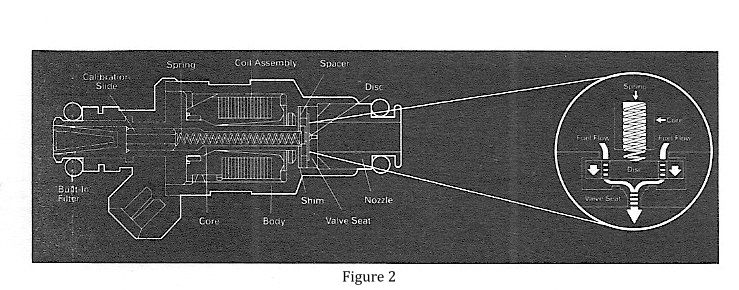Fuel Injector Spray Styles
There are several types of Multi-Port fuel injectors. In general, all injector designs are similar. Some are optimized for specific characteristics such as fuel metering, valve response time, low pulse width linearity, and so on. To discuss the actual design differences involves intense injector design theory and is beyond the scope of this article. The focus will be on two areas of injector design that are of interest to most performance enthusiasts, i.e. spray atomization and clogging resistance.
Injector spray atomization begins at the metering orifice. Injectors designed by Robert Bosch Corp. help atomize fuel by “fanning” the fuel into the airstream. The Bosch injector achieves this by using either a pintle valve or multi-hole concept. The pintle design utilizes a needle valve with a formation on the end, called a pintle, which protrudes through the metering orifice. When fuel flows through the orifice it is forced out in the shape of a cone by the pintle. This spray is spread out finely into an approximate 15-30 degree fan.
The multi-hole design does not incorporate a pintle-orifice configuration but instead, a series of orifices drilled out at angles which create a similar cone spray when fuel flows through the holes.


